Feeling lost in the world of skincare? With endless products claiming to be the best, it’s tough to know what your skin truly needs. Enter Cetaphil Vs Aquaphor—two big names that can transform your routine. But which one suits you better?
Let’s break it down so you can find your perfect match!
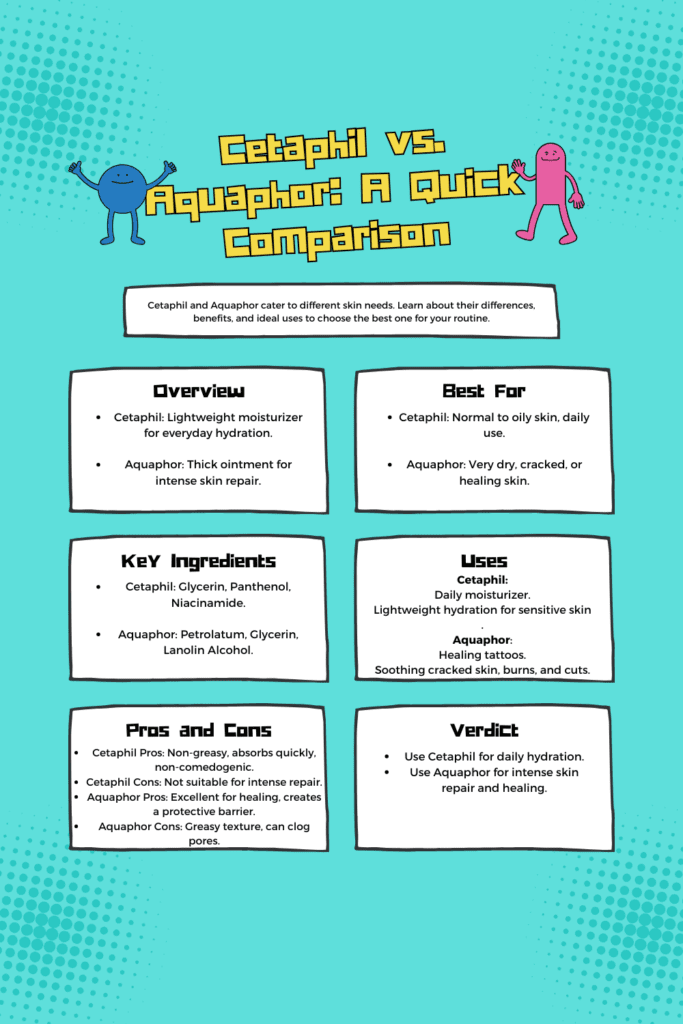
Which Is Better: Cetaphil vs Aquaphor
The choice between Cetaphil or Aquaphor depends on your skin’s needs. Cetaphil is better for daily use, offering lightweight hydration and soothing benefits for normal to oily skin without clogging pores.
Aquaphor, with its thicker, balm-like texture, excels in repairing extremely dry, cracked, or healing skin. If you want a non-comedogenic moisturizer, choose Cetaphil. For intense skin repair or a protective barrier, Aquaphor is the better option.
Both are excellent, but Cetaphil suits everyday hydration, while Aquaphor is ideal for targeted skin recovery.
Recommended: Paula’s Choice vs The Ordinary: Affordable vs Premium Skincare
What is Cetaphil and Aquaphor?
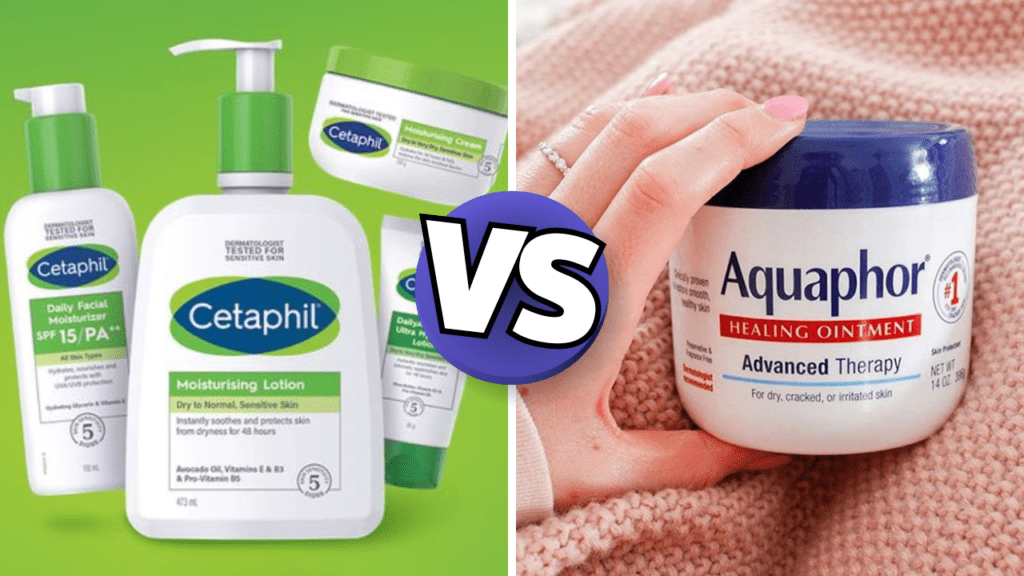
When it comes to skincare, two popular names often pop up: Cetaphil and Aquaphor. Let’s break them down so you can understand what makes each one special!
Cetaphil is a gentle skincare brand known for its mild cleansers and moisturizers. If you have sensitive or dry skin, Cetaphil is like your best friend—it cleanses without stripping your skin of natural oils and provides hydration without causing irritation.
Dermatologists often recommend Cetaphil for conditions like eczema, rosacea, and acne because it’s fragrance-free and super gentle. Its star product, the Cetaphil Gentle Skin Cleanser, is a cult favorite for a reason—it works for all skin types!
On the other hand, Aquaphor is a skin protectant and healing ointment. It’s like a multipurpose superhero for your skin! Aquaphor is designed to soothe and repair dry, cracked, or irritated skin.
Made with petrolatum (similar to petroleum jelly but lighter), it locks in moisture and creates a protective barrier on your skin. It’s great for healing minor cuts, burns, or chapped lips. Many moms even use it as a diaper rash cream for their babies!
While Cetaphil focuses on cleansing and hydrating, Aquaphor shines when it comes to healing and protecting. Think of Cetaphil as your daily skincare routine and Aquaphor as your rescue remedy for when your skin needs extra love.
Both are affordable, dermatologist-approved, and easily available—so why not have both in your skincare arsenal? 😊
Recommended: Avene vs La Roche Posay: Which Skincare Brand Wins in 2025?
Product Line Comparison: Cetaphil vs Aquaphor
1. Moisturizers
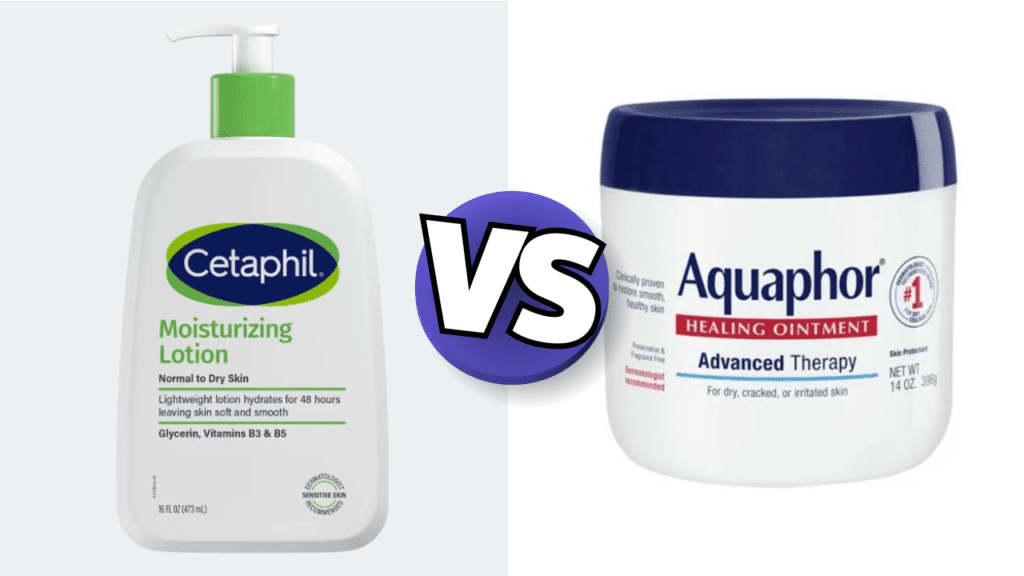
- Cetaphil: Offers lightweight lotions and creams designed for daily hydration. Popular options include the Daily Hydrating Lotion (perfect for normal to oily skin) and Rich Hydrating Cream (ideal for dry skin). These products are non-comedogenic, gentle, and suited for sensitive skin.
- Aquaphor: Focuses on heavy-duty moisturization with products like the Healing Ointment, a thick balm for very dry, cracked skin. It locks in moisture and protects skin but may feel greasy for daily use.
2. Cleansers
- Cetaphil: Known for its Gentle Skin Cleanser, a soap-free, non-foaming formula perfect for sensitive skin. It cleans without stripping natural oils.
- Aquaphor: Does not have an extensive cleanser line. The Gentle Wash & Shampoo is their key product, designed for babies and sensitive skin types.
3. Healing and Protection
- Cetaphil: Limited focus on healing, primarily targeting hydration and soothing irritation with products like the Soothing Relief Cream.
- Aquaphor: Excels in skin repair with its Advanced Therapy Healing Ointment, which protects cuts, burns, and dry patches.
4. Baby Care
- Cetaphil: Offers a full baby skincare line with gentle lotions, washes, and diaper rash creams, formulated to protect delicate skin.
- Aquaphor: Focuses on healing with products like Baby Healing Ointment, ideal for diaper rash and minor irritations.
In summary, Cetaphil is better for daily skincare, while Aquaphor dominates in repair and protection. Choose based on your needs!
You May Also Like: Lubriderm Vs Cetaphil? 2025’s Ultimate Skincare Comparison
Key Ingredients Comparison: Aquaphor Vs Cetaphil
If you’re stuck choosing between Cetaphil or Aquaphor, let’s dive into what makes these two popular skincare products unique. Both are great for your skin, but their ingredients and uses set them apart. Here’s the breakdown:
Cetaphil: Gentle, Lightweight Care
Cetaphil is known for its gentle formulas, making it a go-to for sensitive skin types. Here are its key ingredients and their benefits:
- Water: The main ingredient, ensuring hydration without heaviness.
- Glycerin: A skin-conditioning agent that attracts moisture, leaving your skin soft and hydrated.
- Cetyl Alcohol: Not the bad kind of alcohol! This one is used as an emollient to smooth and soften skin.
- Propylene Glycol: Helps your skin absorb moisture and keeps the formula smooth.
- Panthenol (Pro-Vitamin B5): A soothing ingredient that calms redness and irritation.
Why Choose Cetaphil?
- Ideal for daily use.
- Non-comedogenic (won’t clog pores).
- Best for normal to oily skin.
Aquaphor: Heavy-Duty Skin Repair
Aquaphor takes a thicker, more protective approach, especially for very dry or damaged skin. Let’s check out its star ingredients:
- Petrolatum (41%): The main ingredient, creating a protective barrier to lock in moisture.
- Mineral Oil: Softens and smoothens rough patches.
- Lanolin Alcohol: Helps retain moisture and repair dry skin.
- Glycerin: Like Cetaphil, it’s used for hydration and skin softness.
- Bisabolol: A natural ingredient derived from chamomile, known for its anti-inflammatory properties.
Why Choose Aquaphor?
- Amazing for super dry, cracked skin (think elbows, heels, and lips).
- Acts as a protective layer for skin healing.
- Great for sensitive or post-procedure skin.
Benefits and Uses
Cetaphil is a versatile choice for everyday skincare. Its gentle formula makes it perfect for cleansing and moisturizing without irritating the skin. It’s a great option for people with sensitive, normal, or combination skin. Plus, it’s lightweight and absorbs quickly, making it ideal for daily use.
Aquaphor, however, is your go-to for heavy-duty skin repair. If you have cracked heels, dry elbows, or chapped lips, Aquaphor can work wonders. It’s also commonly used for healing minor cuts, burns, and even tattoos. Because of its thick and greasy texture, it’s best used as a spot treatment rather than an all-over moisturizer.
Differences in Texture and Application
When it comes to texture, Cetaphil feels lightweight and creamy. It’s easy to spread and absorbs quickly without leaving a sticky residue. This makes it a great choice for people who prefer a no-fuss skincare routine.
Aquaphor, on the other hand, is thick and ointment-like. It creates a barrier on the skin, which can feel greasy to some people. While this makes it fantastic for sealing in moisture, it’s not something you’d want to use all over your face or body unless needed.
Skin Concerns and Suitability
Here’s how they compare for specific skin concerns:
- Dry Skin: Aquaphor’s thick, occlusive formula is better for severe dryness, while Cetaphil is perfect for mild to moderate dryness.
- Sensitive or Acne-Prone Skin: Cetaphil’s non-comedogenic and lightweight formulas make it a safer bet.
- Eczema or Psoriasis: Aquaphor’s healing properties can help soothe flare-ups, but Cetaphil’s gentle products may also provide relief.
- Healing Wounds or Irritation: Aquaphor is ideal for minor cuts, burns, or chapped skin, as it promotes faster healing.
Cetaphil vs Aquaphor for Tattoos
When it comes to tattoo aftercare, both Cetaphil and Aquaphor serve different purposes. Here’s how they compare:
Aquaphor for Tattoos
- Best For: Fresh tattoos during the healing stage.
- Why: Its thick, ointment-like texture creates a protective barrier, preventing moisture loss and promoting skin healing. It also reduces scabbing and keeps the tattoo hydrated.
- Drawback: Can feel greasy and may clog pores if over-applied.
Cetaphil for Tattoos
- Best For: Daily care once the tattoo is healed.
- Why: Lightweight, non-comedogenic, and gentle, Cetaphil is excellent for maintaining hydration and preventing skin dryness without clogging pores.
- Drawback: Not as effective in the initial healing stage.
Verdict: Use Aquaphor for immediate tattoo aftercare to aid healing, and switch to Cetaphil for long-term maintenance.
Pros and Cons: Cetaphil vs Aquaphor
| Product | Pros | Cons |
|---|---|---|
| Cetaphil | – Lightweight and non-greasy | – May not be as effective for very dry or cracked skin |
| – Gentle for sensitive skin | – Not ideal for intense skin repair | |
| – Non-comedogenic (won’t clog pores) | – Needs frequent reapplication for dry skin | |
| – Great for daily use and everyday hydration | ||
| Aquaphor | – Excellent for healing and repairing dry, cracked skin | – Greasy texture, may feel heavy on skin |
| – Creates a protective barrier to lock in moisture | – Can clog pores if used excessively on acne-prone skin | |
| – Ideal for tattoos, cuts, burns, and severely dry skin | – Not suitable for daily use on oily skin | |
| – Can be used for both sensitive and very dry skin |
Cost and Availability
When it comes to price, both Cetaphil and Aquaphor are affordable and widely available. However, Cetaphil’s products tend to be slightly more expensive, especially for their cleansers and specialty moisturizers. Aquaphor is often sold in larger tubs or tubes, which can be more cost-effective for heavy-duty use.
User Reviews and Testimonials
Cetaphil users love how gentle and non-irritating the products are, especially for sensitive skin. Many appreciate the lightweight feel and how well it works as part of their daily skincare routine.
Aquaphor fans rave about its ability to heal dry and damaged skin quickly. It’s especially popular among parents for soothing diaper rash and among athletes for preventing chafing.
Cetaphil vs Aquaphor: Comparison Table
| Aspect | Cetaphil | Aquaphor |
|---|---|---|
| Texture | Lightweight, lotion-like | Thick, ointment-like |
| Best For | Daily hydration and sensitive skin | Intense repair and healing of dry, cracked skin |
| Main Ingredients | Glycerin, Panthenol, Cetyl Alcohol | Petrolatum, Glycerin, Lanolin Alcohol |
| Use for Tattoos | Maintenance after healing | Initial healing and skin repair |
| Non-Comedogenic | Yes | No |
| Target Skin Types | Normal to oily skin | Very dry, damaged, or sensitive skin |
| Healing Properties | Mild soothing | Strong repair and protection |
| Application Feel | Absorbs quickly, non-greasy | Greasy, forms a protective barrier |
| Product Variety | Extensive (moisturizers, cleansers, baby care) | Focused on healing ointments and repair care |
| Price Range | Affordable and mid-range | Affordable but slightly higher for larger sizes |
Summary: Choose Cetaphil for lightweight, daily hydration and Aquaphor for intensive healing and protection needs.
Which One Should You Choose? Cetaphil Or Aquaphor
If you’re looking for an everyday skincare solution that’s gentle, lightweight, and suitable for most skin types, Cetaphil is a fantastic choice. It’s perfect for maintaining healthy skin and addressing mild concerns.
If you’re dealing with very dry, cracked, or irritated skin, or if you need something to help heal wounds and protect sensitive areas, Aquaphor is the better option. Its thick and soothing formula is designed to provide intense care where it’s needed most.
FAQ’s: Cetaphil Vs Aquaphor
Conclusion
Choosing between Cetaphil vs Aquaphor depends on your skin’s unique needs. Both are excellent products with their own strengths. If you’re unsure, it’s always a good idea to try both and see which one works best for you.
And remember, if you have specific skin conditions or concerns, consulting a dermatologist is always a smart move.
Your skin deserves the best care, so don’t be afraid to experiment and find what makes it happiest!

Sophie is your go-to girl for all things makeup and hair! She believes beauty should be fun, not stressful, and she’s here to share tips, product reviews, and honest thoughts from a real-world perspective.




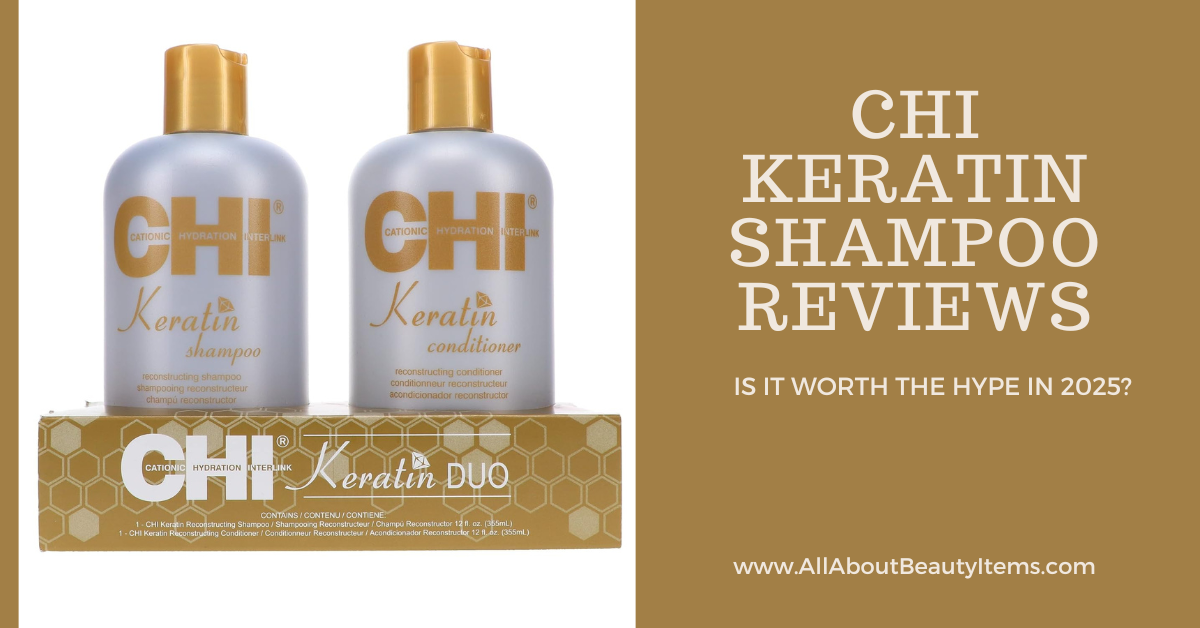
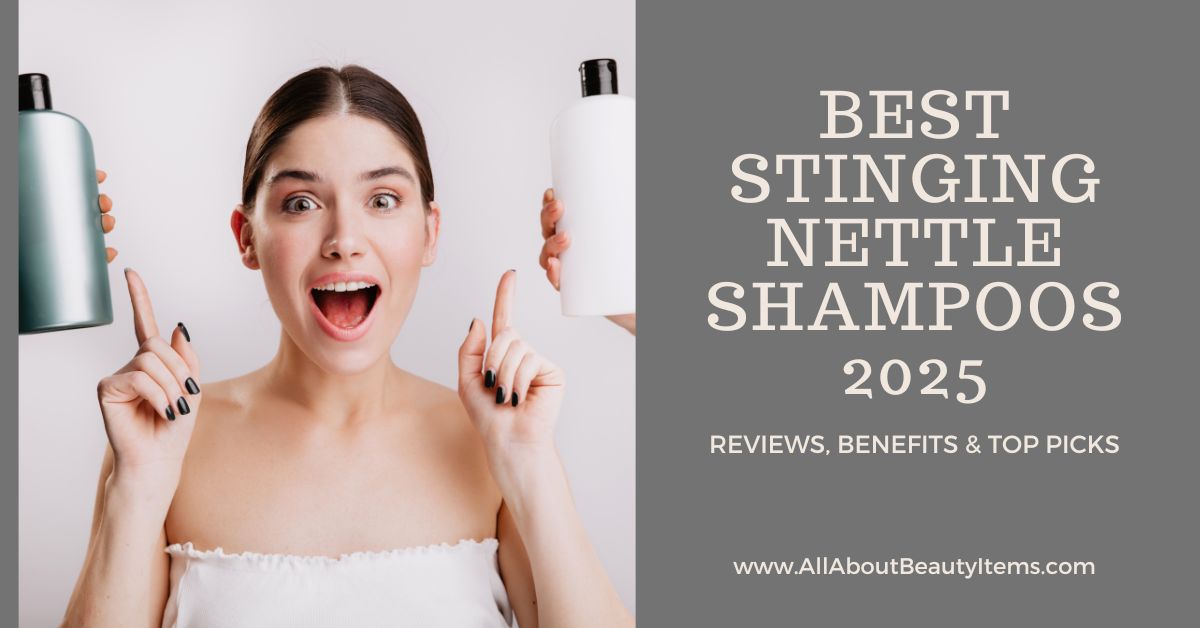
Leave a Reply